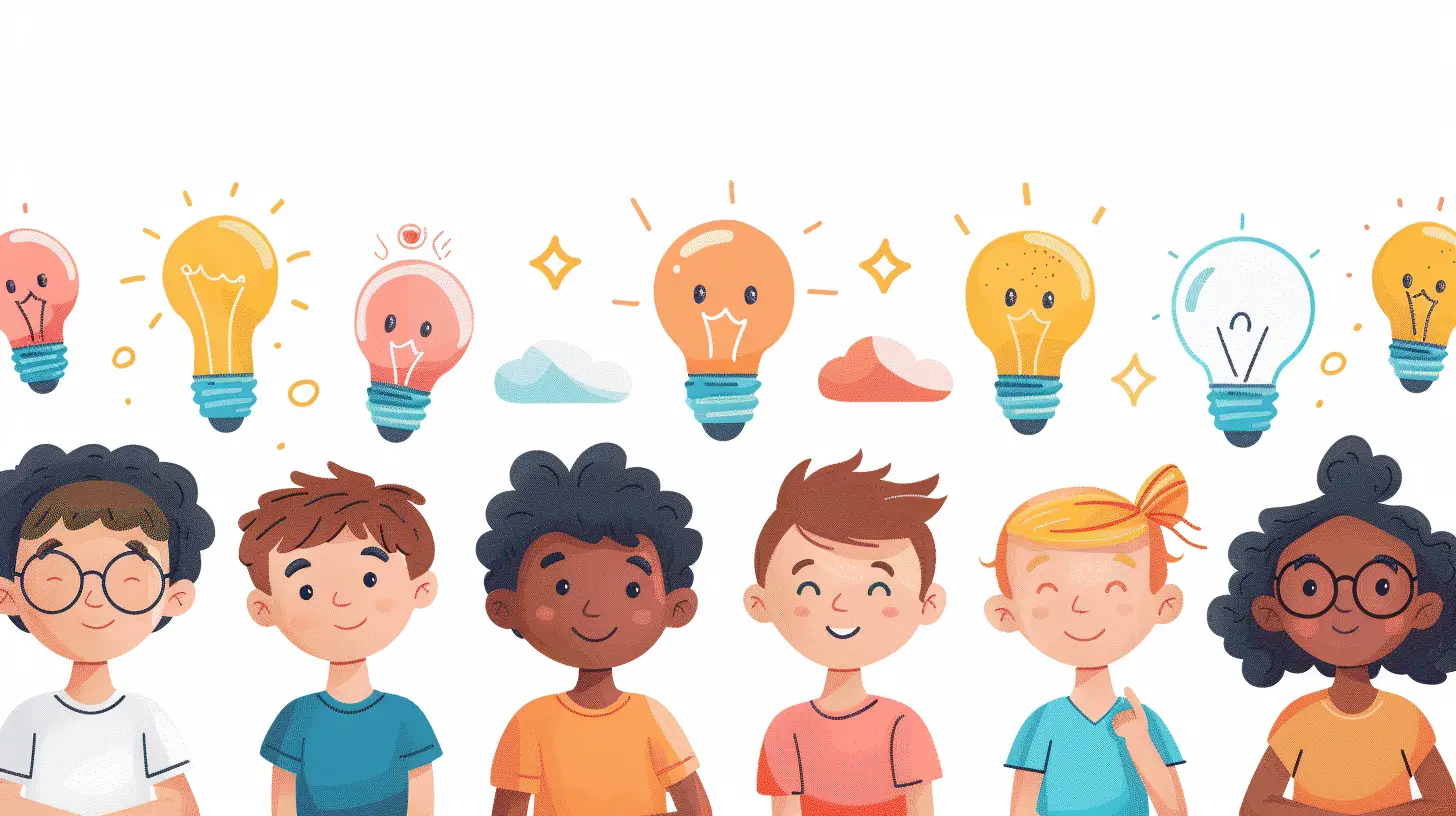3 January 2025
In today’s rapidly evolving world, critical thinking is more important than ever before. It’s not just about memorizing facts or regurgitating information. Young learners need to be able to analyze, evaluate, and make decisions based on evidence and reasoning. But how exactly do you help children develop these essential skills? Don’t worry, I’ve got you covered!
In this article, I’ll walk you through some proven strategies for fostering critical thinking in young learners. Whether you're a parent, teacher, or mentor, these tips will guide you in nurturing inquisitive minds and empowering kids to think for themselves - and think deeply.
Let’s dive in!

What is Critical Thinking?
Before we get into the nitty-gritty, let’s take a moment to define what critical thinking actually is. At its core, critical thinking involves the ability to think clearly and rationally, understanding the logical connection between ideas. It’s about questioning assumptions, analyzing different viewpoints, and making well-reasoned judgments.Think of critical thinking as a mental workout for your brain. Just as exercising your body helps build strong muscles, practicing critical thinking helps build a sharp, agile mind.
Why is Critical Thinking Important?
You might be wondering, “Why should we even bother teaching kids critical thinking?” Well, it’s simple. Critical thinking equips young learners with the tools they need to navigate life’s challenges. It helps them:- Solve problems effectively – Instead of jumping to conclusions, they evaluate options and weigh the pros and cons.
- Make better decisions – From choosing friends to picking career paths, critical thinking helps kids make informed choices.
- Become independent learners – They learn to ask the right questions and seek out answers on their own.
- Understand different perspectives – Critical thinking encourages empathy and appreciation for diverse viewpoints.
In short, critical thinking is crucial for both academic success and personal growth.

Key Strategies to Foster Critical Thinking in Young Learners
Now that we’ve defined critical thinking and its importance, let’s look at some practical strategies to promote this skill in young learners.1. Encourage Curiosity and Asking Questions
Remember the age-old adage, “There’s no such thing as a stupid question”? Well, it’s true! Encouraging kids to ask questions is one of the best ways to nurture their critical thinking skills. When children are curious, they naturally want to explore, discover, and understand the world around them.Don’t just give them answers right away. Instead, respond with open-ended questions like, “What do you think?” or “How would you solve this problem?” This helps them reflect and come up with solutions on their own.
Example:
If a child asks, “Why is the sky blue?” Instead of giving a simple scientific explanation, ask them, “What do you think causes the sky to look blue? Let’s explore it together!” This way, they engage in critical thinking and investigation.2. Promote Problem-Solving Activities
Problem-solving is a fantastic way to get those critical thinking gears turning. Whether it’s a puzzle, a riddle, or a real-life challenge, encouraging young learners to work through problems helps them develop logical reasoning and creative thinking.Give them age-appropriate problems to tackle and allow them to brainstorm solutions. Even if they don’t get it right the first time, the process of working through a problem is what matters most.
Example:
You can set up a fun activity where kids have to build a bridge using household items like straws, paper, and tape. Ask them to figure out which materials would make the bridge the strongest. This hands-on approach fosters both creativity and critical thinking.3. Encourage Reflection and Self-Assessment
Reflection is a key component of critical thinking. After completing a task or solving a problem, encourage young learners to reflect on what they did and how they could improve.Ask them questions like:
- “What do you think went well?”
- “What would you do differently next time?”
- “Why do you think this solution worked?”
This type of reflection helps children analyze their own thinking processes and become more aware of how they approach problems.
4. Teach Them to Evaluate Information
In today’s digital age, children are constantly bombarded with information. One of the most valuable critical thinking skills they can develop is the ability to evaluate the credibility of information.Teach them to ask questions like:
- “Where did this information come from?”
- “Is this source trustworthy?”
- “Are there different perspectives on this topic?”
This helps them become discerning consumers of information and avoid falling for misinformation or biased views.
Example:
If they come across a news article online, ask them to evaluate its sources. Is it from a reputable website? Are the claims backed by evidence? This will teach them to not accept information at face value but to investigate further.5. Foster a Growth Mindset
A growth mindset is the belief that abilities can be developed through dedication and hard work. When children understand that they can improve their skills, including critical thinking, they are more likely to embrace challenges and persist in the face of setbacks.Encourage young learners to view mistakes as learning opportunities rather than failures. Praise their effort and perseverance, not just the outcome. This builds resilience, which is crucial for critical thinking.
Example:
If a student struggles with a math problem, instead of saying, “You’re not good at math,” say, “You haven’t mastered this yet, but with practice, you’ll get there!” This encourages them to keep trying, knowing that they have the ability to improve.6. Promote Debate and Discussion
Debating and discussing different viewpoints is an excellent way to foster critical thinking. Engage children in friendly debates on various topics and encourage them to back up their arguments with facts and reasoning.This not only helps them develop their argumentative skills but also teaches them to listen to and consider opposing viewpoints. It’s a great way to practice thinking critically about different perspectives.
Example:
Host a family debate night where everyone picks a topic, such as “Should school uniforms be required?” Encourage kids to present their arguments and challenge them to think critically about their position.7. Use Books and Stories to Stimulate Thinking
Reading books and stories is a fantastic way to stimulate critical thinking. When children read, they’re exposed to different characters, situations, and moral dilemmas. Ask them to think about the motivations of the characters, the consequences of their actions, and how they might have acted differently.Example:
After reading a story, ask questions like, “Why do you think the character made that choice?” or “What would you have done in that situation?” This encourages them to think deeply about the story and its themes.8. Let Them Play!
Believe it or not, playtime is an essential part of developing critical thinking. Unstructured play allows children to use their imagination, experiment with different possibilities, and solve problems on their own.Whether it’s building with blocks, playing pretend, or engaging in a role-playing game, play stimulates cognitive development and enhances critical thinking skills. So, don't underestimate the power of play!

The Role of Teachers and Parents in Developing Critical Thinking
As parents, teachers, and mentors, we play a crucial role in shaping young learners’ critical thinking abilities. But here’s the kicker: it’s not just about giving kids the answers or telling them what to think. It’s about creating an environment where they feel safe to explore, make mistakes, and learn from them.Here are a few tips for fostering an environment that promotes critical thinking:
- Be a role model – Demonstrate critical thinking in your own life. Show them how you weigh decisions, evaluate information, and solve problems.
- Create a safe space for inquiry – Encourage kids to ask questions and express their thoughts without fear of judgment.
- Provide opportunities for hands-on learning – Whether it’s science experiments, art projects, or real-world problem-solving, give kids the chance to engage in experiential learning.
- Be patient – Developing critical thinking takes time. Don’t rush the process. Encourage perseverance and curiosity.

Conclusion
Fostering critical thinking skills in young learners is one of the most valuable gifts you can give them. It empowers them to navigate the complexities of life, make informed decisions, and approach challenges with confidence and creativity. Whether it’s through asking questions, solving problems, or engaging in discussions, there are countless ways to nurture this essential skill.So, the next time your child or student asks, “Why?” don’t just give them the answer—guide them to find it themselves. After all, critical thinking isn’t just about what they learn; it’s about how they learn.












Lara Harris
Critical thinking in kids? It's like teaching them to use a magic wand that transforms 'Why?' into 'Let me explore!' Just remember, even wands need a little battery life!
March 30, 2025 at 7:03 PM